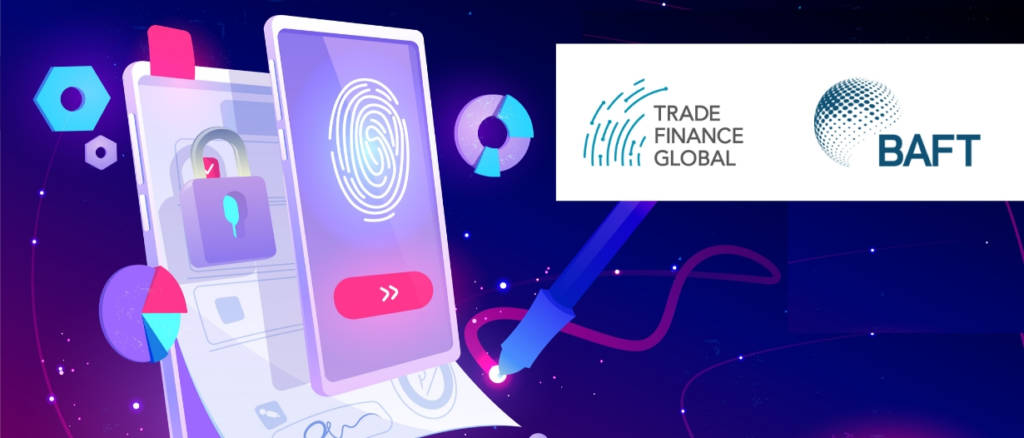After a long night, the dawn gives hope of something new and promises a fresh start. There has been a long and, partly, desperate anticipation to transform Trade Finance more digital to support Global Trade which also is having its digital transformation ongoing.
During the past years, new and emerging technology has given a boost to experiment new ways of working and processing trade transactions and their financing. This boost, though, has lacked wide support from regulators and jurisdictions globally and locally as the Trade Finance instruments used are still very paper-based with a multitude of rules and laws supporting only the physical documentation set.
In this very moment we are facing an immense global crisis by the COVID-19 which forces us to avoid physical contact of any kind to avoid contagion. This has meant another boost to beat the challenges of traditional Global Trade and Trade Finance and start using new digital business and financial processes. The long night of non-progress seems to really break to a new, digital dawn.
Good signals by ICC
One of the key stakeholders in the Global Trade is International Chamber of Commerce, ICC. It has attacked the status quo with a multitude of initiatives: new recommendations, guideline renewals and standards coordination to enable digitalisation in Trade Finance. To be able to innovate, experiment and implement new digital solutions, ICC has created a working group to establish e-compatibility of the traditional ICC rules to Uniform Rules for Digital Trade Transactions (URDTT). This set is under comment iterations but will hopefully set basement for further standardisation and harmonisation, using harmonised ways of working, of new Trade Finance solutions and offerings.

Standards and semantics
New technology and new platforms with the new rules of Trade Finance. Which comes first or can we make things happen in parallel? There will not be good rules (market practices) nor good technical or functional solutions without a common language, interoperability. Standard and its semantics will make structured data able to be stored in databases or distributed ledgers in an understandable way, enabling smooth integrations as well, and on the other hand standards and semantics will make structured data to be transformed into an understandable real-life instance of information sets used in business transactions.
So, we’ll need structured Trade Finance business data with agreed taxonomy. Taxonomy explains the structure and meaning of the data sets. Data becomes information, which makes it more understandable both for humans to operate and computers to automate. To reach next steps on the data hierarchy (data-information-knowledge-wisdom), we’ll need another layer. One new and very promising approach is the Semantic Web and knowledge ontology approach by W3C. It enables, with a variety of tools, to make an additional and universal layer, upon the existing data models and vocabularies by creating a common, linked data model available for all, even across the industries.
Of course, there is still a lot of progress to be achieved in vertical industries to interoperate as well and therefore the W3C Web Semantics is already working with many of them. For the standardised data modelling the exchange of information is needing also a common way of integration. At this moment it seems being Application Programming Interface (API) approach becoming the common language of making the platforms discuss with the same language and operate with the data sharing. Using APIs and W3C Web Semantics Linked Data we have a good opportunity to include more knowledgeable resources to develop common and well interoperable services.
Practical initiatives
Another ray of light in the dawn of digital Trade Finance is the ICC’s Digital Trade Standards Initiative (DSI). Its aim is to coordinate all standards frameworks existing on local or global level as the first step. The membership will be open for all organisations, geographies, industry associations and initiatives by supporting the DSI’s core mandate. From the Standardised Trust community perspective, me included, DSI initiative is very much welcomed for two reasons: firstly ICC steered ability to coordinate various siloed market standards and practices and secondly being openly available. Many previous initiatives at this business and product area has been struggling due to closed user group and/or license-fee based membership mentality. The only way to make Trade Finance standardisation and harmonisation opportunity to realise is to make the needed standards coordination and development resources openly available for the business process and systems developers. To innovate, experiment and finally implement in a way which enables interoperability, not block it.
So, it is time to collaborate and interoperate to transform the dawn into a bright day. We have seen already good steps taken by ICC, as discussed, Bankers Association for Finance and Trade (BAFT) with its Digital Ledger Payment Commitments (DLPC) practices documentation, International Trade and Forfaiting Association (ITFA) with its Digital Negotiable Instruments initiative and Standardised Trust community’s ongoing work with guarantee semantic modelling. All these listed only as few examples of what is generally happening on the market. There is a high interest in commonly enter the new era of digital Trade Finance.































